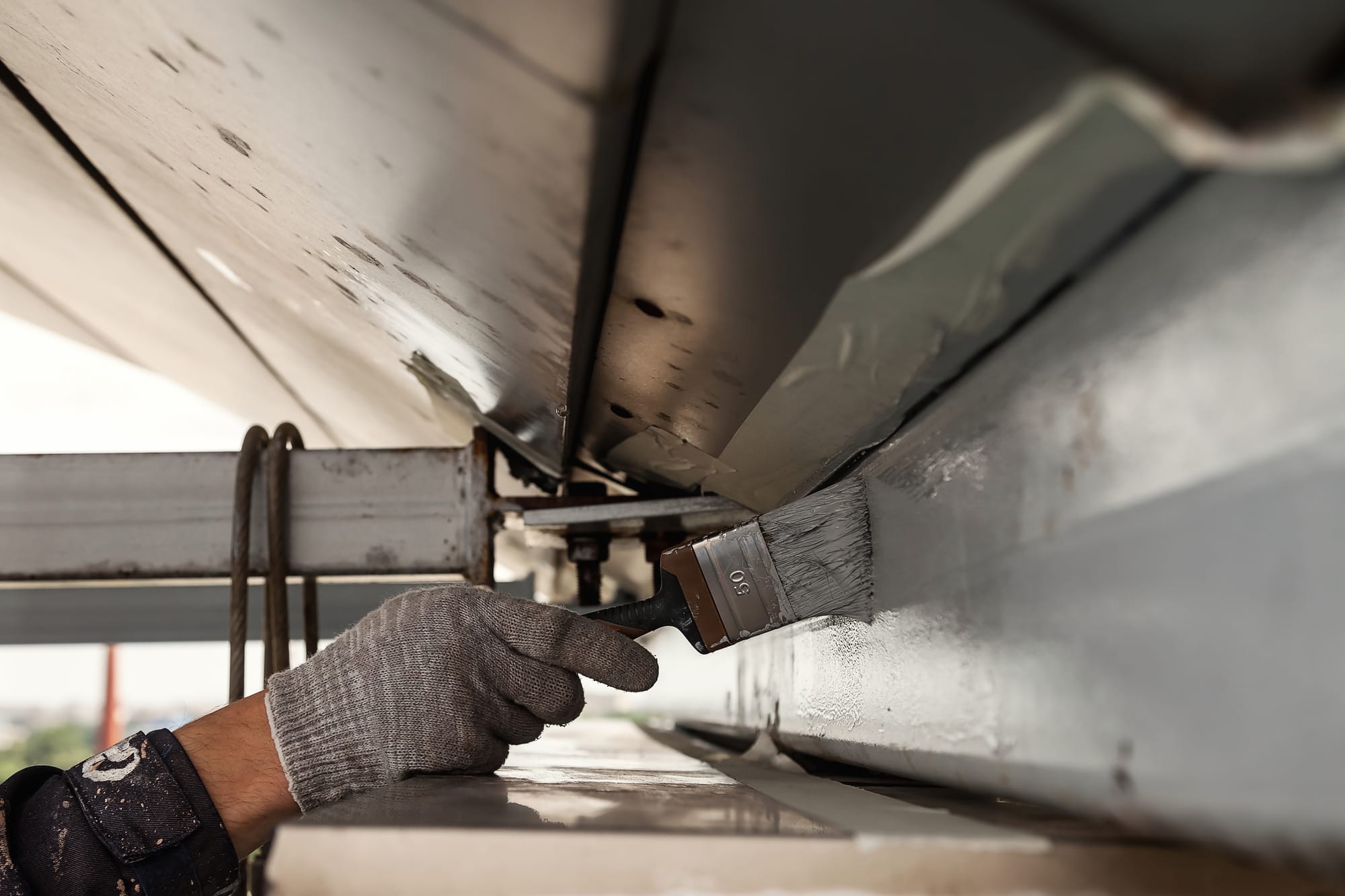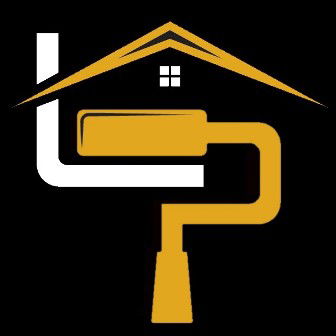Tips for Painting Hard-to-Reach Areas

Key Features
- Proper Tools for Hard-to-Reach Areas: Learn which brushes, rollers, and accessories are ideal for tricky spots.
- Step-by-Step Techniques: Practical tips for painting tight corners, high ceilings, and behind obstacles.
- Professional Insights: When and why hiring a professional painter makes a difference in quality and safety.
Painting Hard-to-Reach Areas
Painting hard-to-reach areas can feel like an intimidating challenge, but with the right techniques, tools, and know-how, you can achieve a flawless finish. Whether it's tight corners, high ceilings, or narrow spaces, the right approach can make all the difference. Today, I'll guide you through some practical tips to help you tackle those tricky spots confidently and efficiently—just like we do at Lightmen Painting.
Why Is Painting Hard-to-Reach Areas Challenging?
Hard-to-reach areas pose challenges for a variety of reasons. It could be the awkward angle, height, or simply limited access that makes the task difficult. To make sure every inch of your space looks professionally done, it’s crucial to equip yourself with both the proper tools and strategies.
What Tools Help Paint Hard-to-Reach Places?
Having the right tools can make all the difference when painting hard-to-reach areas. Here are some must-haves:
1. Extension Poles
Extension poles are lifesavers for reaching high ceilings or tall walls without needing to use a ladder. A quality extension pole allows you to paint evenly while maintaining safety, as you won't need to keep repositioning a ladder.
2. Angled Brushes
Angled brushes are great for precision work, especially when painting corners or areas near trim. They make it easier to get a smooth, even line without excess drips or splatters.
3. Paint Edgers
Paint edgers are specifically designed to help you get clean lines along ceilings or baseboards. They’re ideal for anyone who finds cutting-in to be a bit nerve-wracking.
Things to Know
- Extension poles are game-changers for high areas, reducing the need for ladders.
- Cutting-in is crucial for a neat finish—always start with edges before moving to larger surfaces.
- Angled brushes are your best friend when painting around trim or in tight spaces.
- Surface preparation is key to ensure the paint adheres well and looks its best.
- Patience is essential—rushing through hard-to-reach areas can lead to drips and mistakes.
How to Paint Tight Corners and Narrow Spaces
Tight corners and narrow spaces often require patience and a different set of techniques. Here’s how you can master these areas:
1. Use a Smaller Brush
Switching to a smaller brush gives you more control in tight areas. A 1- to 2-inch angled sash brush is perfect for reaching small corners and applying paint precisely without overlapping onto adjacent surfaces.
2. Cut-In First
Cutting-in is the process of painting along the edges before using a roller for the larger surfaces. For tight areas, always cut-in first with a steady hand to ensure that you get the corners neat without messing up the surrounding areas.
3. Consider Specialty Tools
Corner rollers or mini foam rollers are perfect for squeezing into narrow spaces and tight angles. They can speed up the process while providing smooth, even coverage.
Best Techniques for Painting High Ceilings
Painting high ceilings can be a daunting task without the proper plan. Here’s how to make this challenge more manageable:
1. Invest in a Sturdy Ladder
While extension poles can do a lot of the heavy lifting, there may be times when you still need a ladder. Make sure your ladder is stable and of appropriate height to reduce strain and ensure safety.
2. Use an Extension Pole with a Roller
When working on high ceilings, attach a roller to an extension pole to make painting easier and quicker. Make sure to use a roller with an appropriate nap—thicker naps hold more paint, making the job faster while ensuring even coverage.
3. Apply Paint in Sections
When working with high ceilings, break the area into smaller, manageable sections. This approach will help you maintain a wet edge, avoiding noticeable lap marks and ensuring a smooth, professional-looking finish.
In Our Experience
"Painting hard-to-reach areas is all about preparation, the right tools, and knowing when to take your time. At Lightmen Painting, we’ve tackled everything from high ceilings to narrow spaces, and the key is a combination of skill, patience, and top-quality equipment. Trusting professionals can often save you both time and frustration when it comes to those more challenging spots."
How to Reach Behind Obstacles Like Radiators or Fixtures
Painting behind obstacles can be tricky, but there are ways to ensure complete coverage:
1. Remove What You Can
If possible, remove obstacles like light fixtures or vent covers. This makes it much easier to paint behind them and ensures a uniform finish.
2. Use a Specialty Mini Roller
For obstacles that cannot be removed, like radiators, use a long-handled mini roller. These rollers are small enough to fit behind the object while ensuring that paint is evenly applied.
3. Try a Paint Brush Extension
A paintbrush extension is a flexible tool that can help you reach into very narrow or awkward spaces, allowing for greater precision when painting behind immovable obstacles.
Tips for Avoiding Drips and Spills
One of the biggest concerns when painting hard-to-reach areas is avoiding drips and spills. Here are some pointers to help you:
- Don’t Overload Your Brush or Roller: Too much paint increases the likelihood of drips. Instead, load just enough paint to cover the area and remove excess before applying.
- Work Slowly and Steadily: Rushing can lead to accidents. Take your time to ensure smooth application, especially in high or tight areas.
- Use Drop Cloths and Tape: Protect the surrounding areas with drop cloths and painter’s tape to catch any potential drips or splatters.
Why Hire Professional Painters for Hard-to-Reach Areas?
Sometimes, hiring a professional is the best way to achieve a perfect finish, especially when dealing with particularly tricky or high areas. At Lightmen Painting, we have the experience and tools to tackle any painting job—including those hard-to-reach spots. We focus on safety, precision, and efficiency, making sure your home gets the quality care it deserves without the hassle.
Final Thoughts
Painting hard-to-reach areas doesn’t have to be an overwhelming task. With the right tools, techniques, and a bit of patience, you can achieve a flawless finish. And if you’d rather leave it to the pros, Lightmen Painting is always here to help—we’ve got the expertise to take the stress out of any painting project, ensuring a beautiful, professional result every time.
Do You Have Questions? Give Us A Call With Any & All! 503-389-5758
-
People Also Ask:
What tools do I need to paint hard-to-reach areas?
Tools like extension poles, angled brushes, and mini rollers are essential for painting hard-to-reach areas efficiently.
How do I avoid drips when painting high ceilings?
Avoid drips by not overloading your brush or roller, working in sections, and using extension poles for better control.
Is it worth hiring professionals to paint difficult areas?
Yes, professionals have the tools and experience to ensure a high-quality finish, especially for challenging spots or high ceilings.
-
Subscribe to Our Blog & Elevate Your DIY Game! Never miss a beat! Join the Lightmen Painting community and get the latest insights on painting, DIY projects, and expert tips delivered straight to your inbox.
Have something specific in mind? We’d love to hear your ideas! Let us know what topics or projects you’re curious about—your input could shape our next post.
Subscribe now and let’s transform your spaces together!
Get $3000 in personal assistant credits from Magic .com
^ Click Our Logo Above To Redeem ^
If your in the Portland, Or. area and need advice or a free no obligation estimate call us at 503-389-5758 or email scheduling@lightmenpainting.com
Shout Out:
Celebrating BLS - Industry Insights for Painters
The Bureau of Labor Statistics provides comprehensive information on the painting industry, covering everything from job outlooks to required skills. Lightmen Painting values such resources that help us stay informed and committed to excellence in our craft.
Learn more at BLS.gov.
Thanks for stopping by Lightmen Daily! Stay tuned for more practical tips and expert advice on making your painting projects flawless, from wall to floor!
Definitions
- Extension Pole: A tool that attaches to paint rollers, allowing users to paint high areas without a ladder.
- Angled Brush: A brush with bristles cut at an angle, perfect for cutting in along edges or corners.
- Cutting-In: The process of painting the edges and borders before painting larger areas with a roller.
- Paint Edger: A tool designed to create clean lines when painting near edges, such as baseboards or ceilings.
- Mini Roller: A smaller roller that fits into tight spaces where a standard roller cannot reach.
- Corner Roller: A roller specially designed to fit into corners for even paint coverage.
- Lap Marks: Visible lines created when wet and dry layers of paint overlap.
- Surface Preparation: The process of cleaning and prepping surfaces to ensure paint adheres properly.
- Drop Cloth: A protective cloth used to cover surfaces and catch drips while painting.
- Professional Painter: An expert with specialized skills, tools, and experience in delivering high-quality paint finishes.
Lightmen Painting Serving: Portland, Tigard, Lake Oswego, Tualatin, West Linn, Milwaukie, Sherwood, Happy Valley, Oregon City, Beaverton, Hillsboro, Gresham -Trade Partners-
